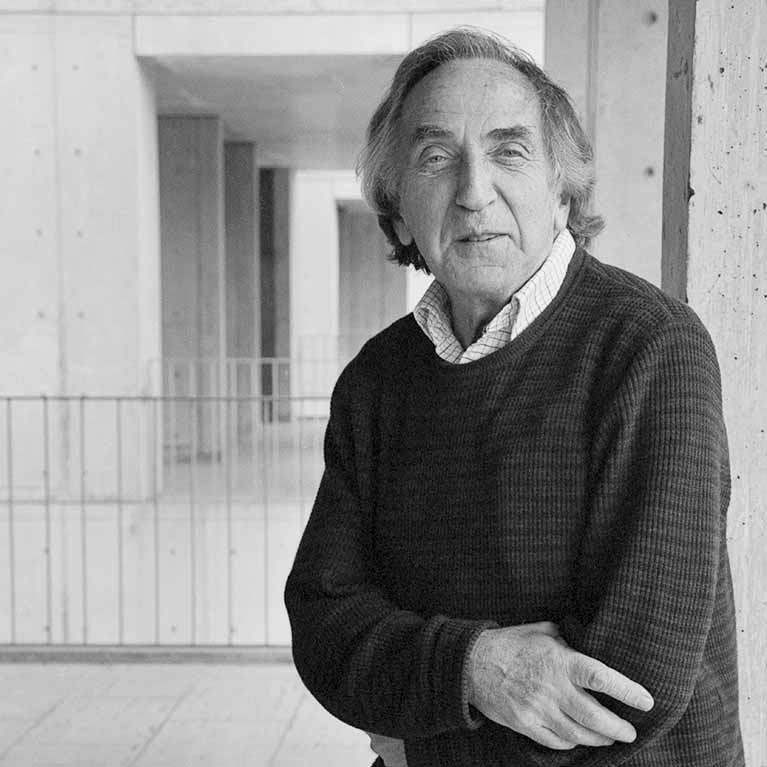
A favorite passage of the Islamic creationist enterprise that publishes under the name Harun Yahya is taken from “The Origin of Life on Earth,” by the chemist and origin-of-life researcher Leslie Orgel (right; 1927–2007), which appeared in Scientific American in 1994. There Orgel wrote:
It is extremely improbable that proteins and nucleic acids, both of which are structurally complex, arose spontaneously in the same place at the same time. Yet it also seems impossible to have one without the other. And so, at first glance, one might have to conclude that life could never, in fact, have originated by chemical means.
The passage is quoted in Harun Yahya’s Atlas of Creation volume 1, The Evolution Deceit, Darwinism Refuted, The Evolution Impasse II, Confessions of the Evolutionists, The Secrets of the (sic) DNA, and doubtless elsewhere as well.
But a fondness for these three sentences of Orgel’s isn’t reserved to Harun Yahya. Indeed, it seems to be shared across the creationist spectrum. The grand old man of young-earth creationism, Henry Morris, displayed it in the second edition of Many Infallible Proofs (1996), for example, while Casey Luskin, formerly a staff member at the Discovery Institute’s Center for Science and Culture, the de facto institutional headquarters of “intelligent design” creationism, included it in a collection of quotations on “Origins and Complexity of Life” on the website of the Intelligent Design and Evolution Awareness Center, a side project of his which appears to have become moribund by late 2008.
The point of quoting the passage, of course, is to suggest that Orgel was expressing pessimism about the prospect of explaining the origin of life with reference to chemistry. Harun Yahya is particularly blatant here: in The Evolution Impasse II, the passage is preceded by the claim, “Probability calculations show that complex molecules such as proteins and nucleic acid (RNA and DNA) cannot possibly come into being separately and by chance. Prominent evolutionists admit this.” Let us not be detained by the fact that Orgel didn’t offer a calculation, or by the fact that he was claiming that it would be improbable for proteins and nucleic acids to have spontaneously arisen together.
But, of course, even on its own, the passage from Orgel already suggests that the creationist spin is unwarranted, for Orgel conspicuously says that it “seems impossible to have one without the other …” and “at first glance one might have to conclude …” (emphasis added). These hedges don’t entail the falsity of the claims to which they’re attached—he could have continued, “… and indeed it is impossible” or “… and a second glance only solidifies that conclusion” without being inconsistent. But the hedges certainly suggest (the technical term is “implicate”) their falsity. (I employed the linguistic concept of implicature in discussing “belief in evolution” here: part 1 and part 2.)
Indeed, in the very next sentence of the Scientific American article, Orgel explains, “In the late 1960s Carl R. Woese of the University of Illinois, Francis Crick, then at the Medical Research Council in England, and I (working at the Salk Institute for Biological Studies in San Diego) independently suggested a way out of this difficulty,” namely the RNA world hypothesis, according to which RNA served in primitive cells both to store genetic information and catalyze chemical reactions—solving the chicken-and-egg problem that Orgel highlighted. The hypothesis is not a hypothesis about the origin of life as such, since the origin of the RNA world itself stands in need of explanation, but it helps!
In Many Infallible Proofs, Morris at least acknowledges that the passage quoted from Orgel isn’t Orgel’s last word on the subject. He sneers, “Orgel cannot leave it there, of course, because he is committed by firm faith in total naturalism, to a non-theistic origin of life,” adding, “Currently (1996), he is pinning his hopes on the so-called ‘RNA’ molecule, but he has acknowledged that this idea has no little or no evidence to support it.” Let us not be detained by Morris’s perverse suspicion of the term “RNA,” which dates back at least to 1942, according to the Oxford English Dictionary. But what about Orgel’s supposed acknowledgment that there is little or no evidence for the RNA world hypothesis?
Morris is perhaps thinking of the last paragraph of Orgel’s Scientific American article, which acknowledges, “The precise events giving rise to the RNA world remain unclear … investigators have proposed many hypotheses, but evidence in favor of each of them is fragmentary at best.” But there Orgel is discussing the origin, not the existence, of the RNA world. As regards its existence, Orgel was explicit: “a fair amount of evidence has lent credence to the idea that the hypothetical RNA world did exist and [led] to the advent of life based on DNA, RNA, and protein,” citing especially the discovery of ribozymes—enzymes composed of RNA—in the 1980s.
I corresponded with Orgel back in 2002, as it happens. Seeking to influence the adoption of state science standards in Ohio, the Discovery Institute compiled a “Bibliography of Supplementary Resources for Ohio Science Education,” which cited, among publications that supposedly challenge the mainstream view of evolution, a 2000 paper of Orgel’s in Proceedings of the National Academy of Sciences. Asked about the Discovery Institute’s use of his work, he was transparently displeased by it, and although his was not the angriest response I received from the scientists I contacted, it’s probably just as well that I didn’t ask him about the Scientific American article too.
Photo: Salk Institute for Biological Studies

